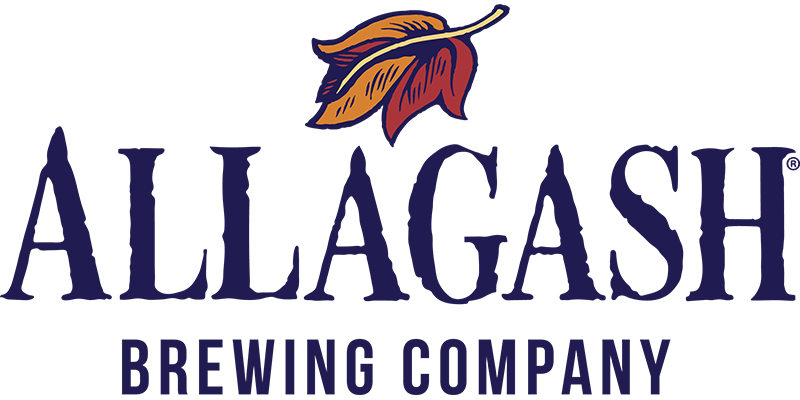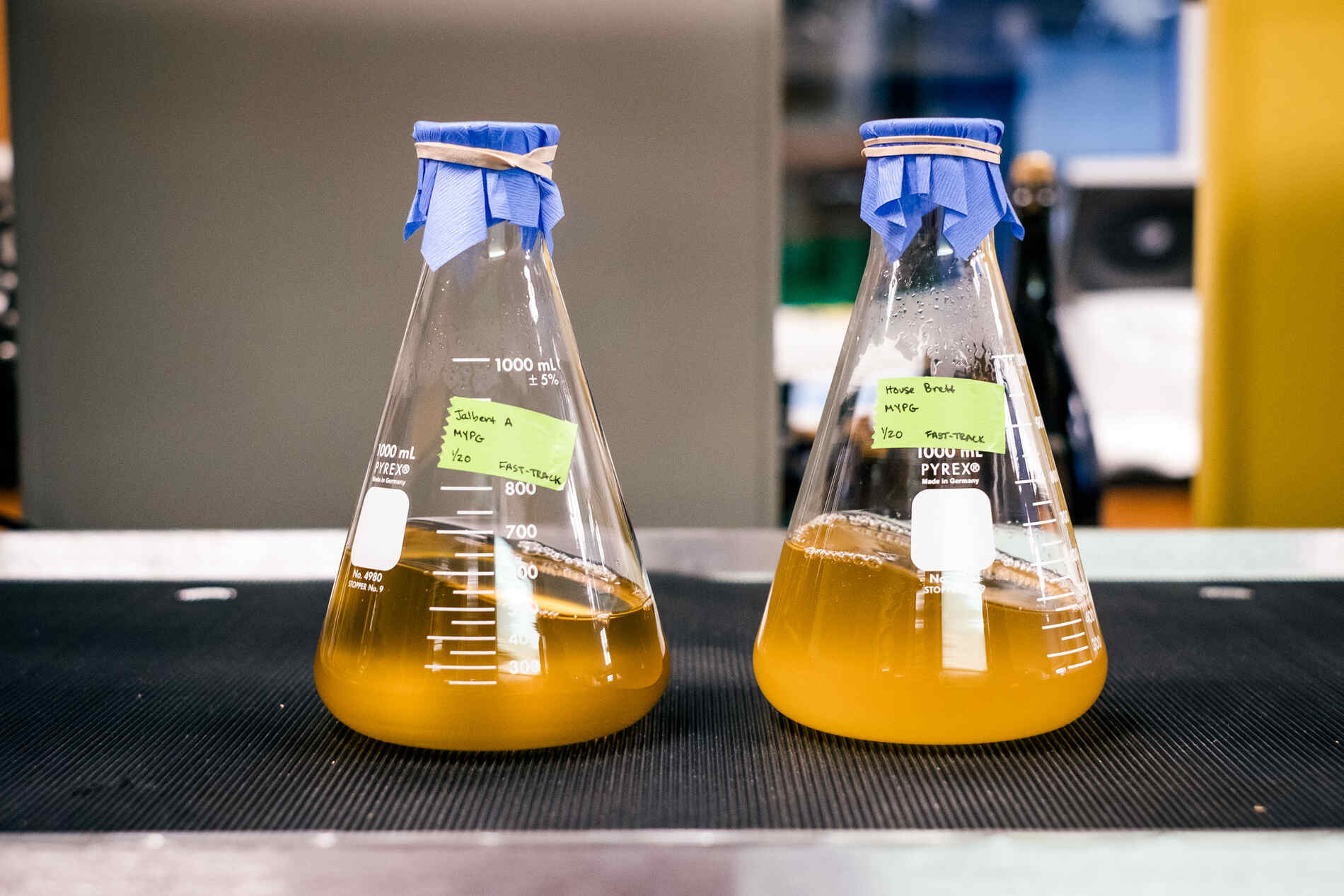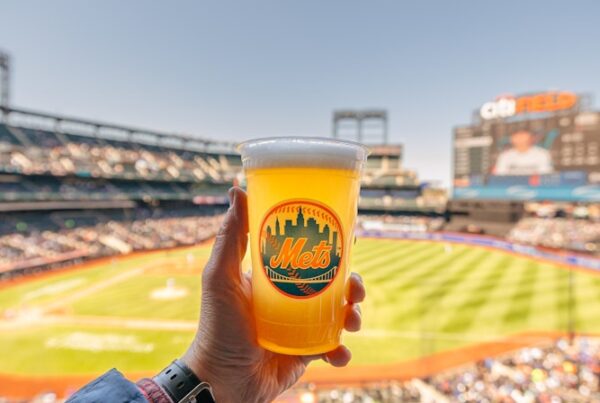Next to brewing, the most important part of a beer’s life cycle is fermentation. Like kombucha, wine, or your favorite bread, beer is fermented. Yes, every beer. From the lightest of light beers to the funkiest of wild and sour beer.
Using grain and water, the brewer creates a sugary liquid called wort and then adds yeast to it. That yeast then eats up the sugar and creates alcohol, carbonation, and other compounds (esters, phenols, etc.) that give beer its particular flavor. Here’s how that works.
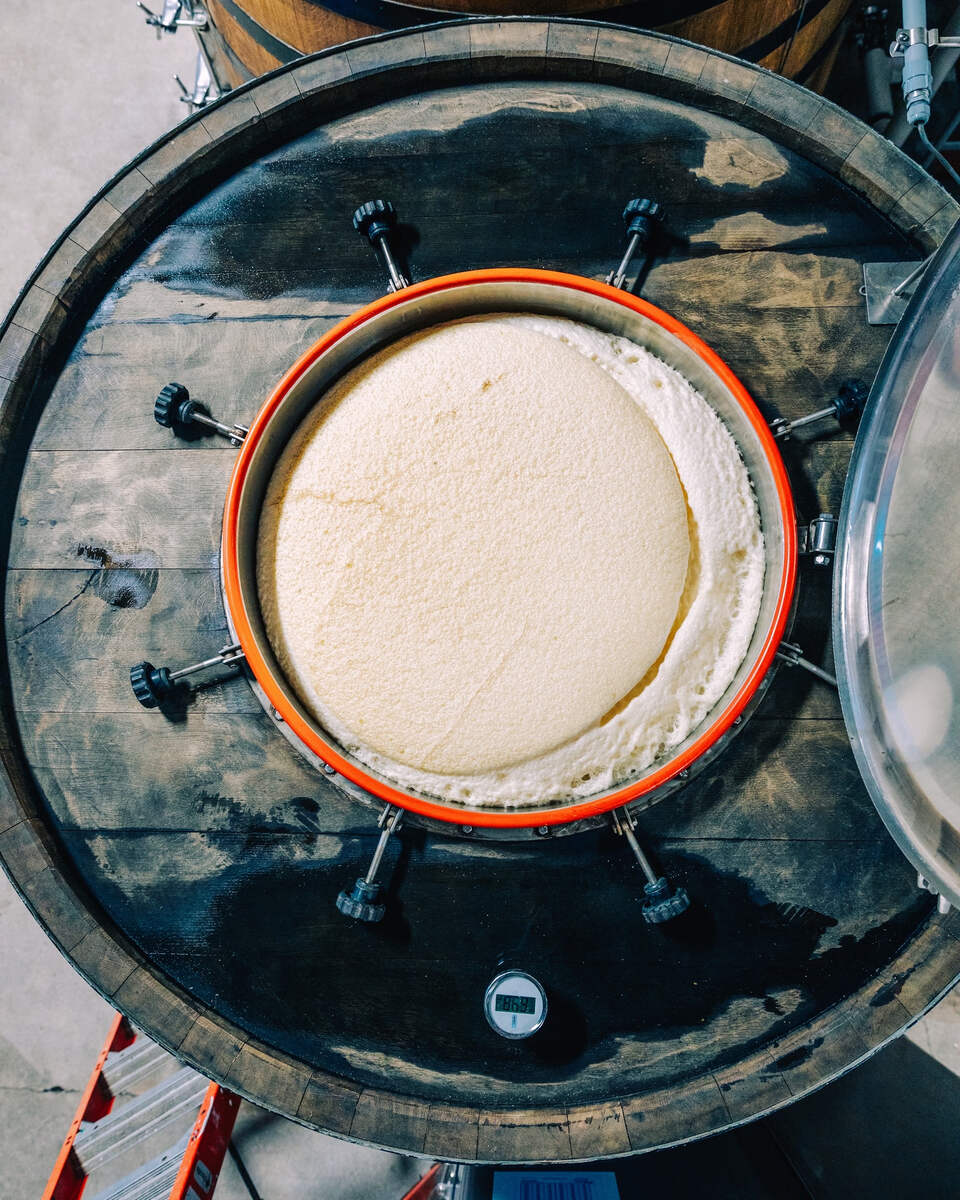
Open fermentation in an oak foudre (basically a giant barrel).
The Most-Used Beer Yeast
Yeast is a living organism—a unicellular fungi, to be more precise. The majority of beers use a yeast strain called Saccharomyces. This translates from Latin to “sugar fungus.” It’s apt, given that the yeast that goes into beer looooooves sugar. Within that genera, there are two specific species of Saccharomyces yeast that get the most use: lager yeast and ale yeast.
Saccharomyces cerevisiae is a top-fermenting ale yeast, and most likely the yeast that brewers were inadvertently brewing with over 3,000 years ago. By top-fermenting, we mean that the yeast likes to rise up to the top of the beer as it eats (and creates alcohol, carbonation, etc.). Ale yeast also tends to ferment best at hotter temperatures, with most preferring temperatures between 50°F and 70°F—with some saison yeasts getting up into the nineties at the peak of fermentation. Ale yeasts are responsible for a huge range of beer styles like witbiers, stouts, ambers, tripels, saisons, IPAs, and so many more.
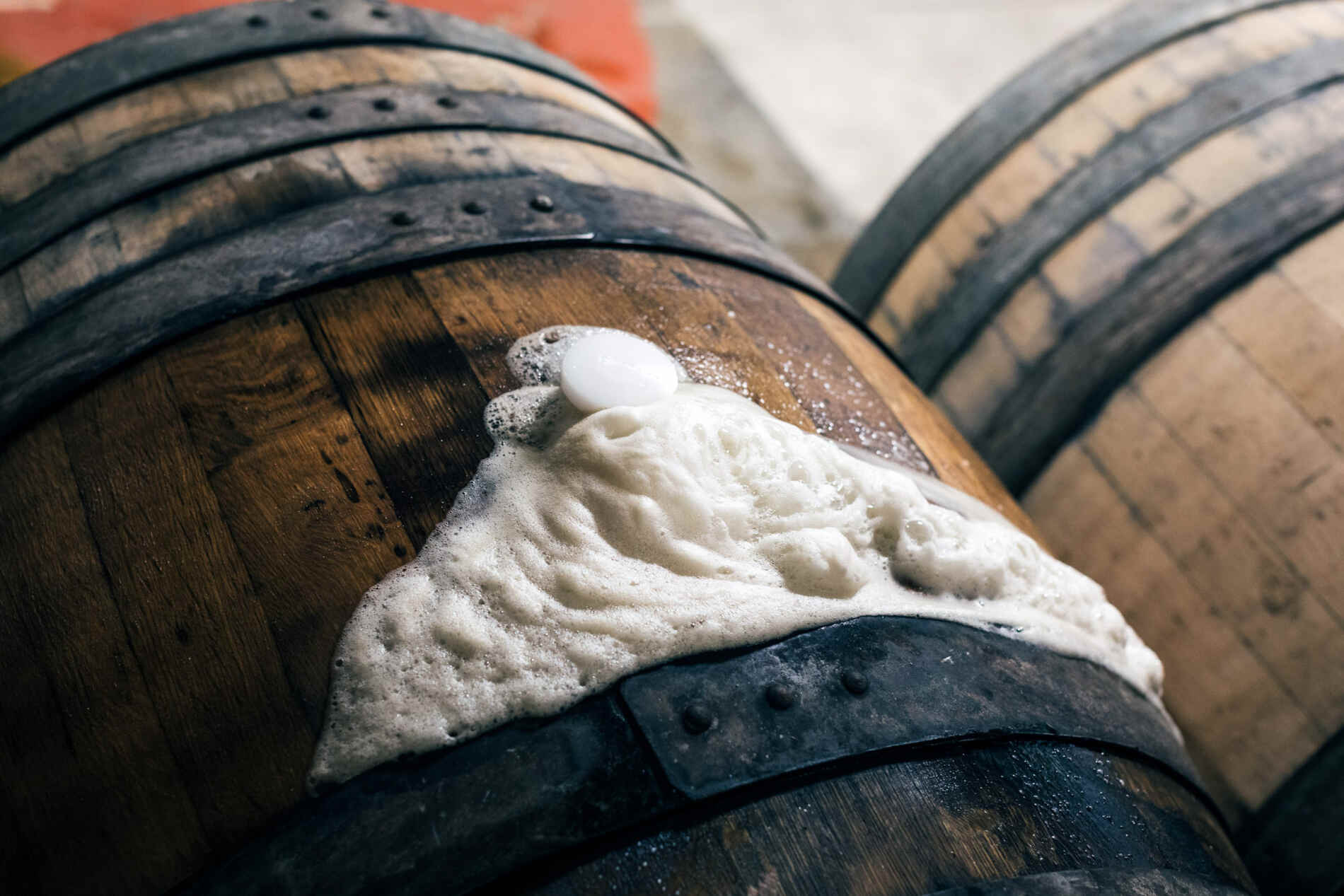
An oak barrel filled with beer in the midst of fermentation.
Low and Slow – Lager Yeast
Saccharomyces pastorianus is a bottom-fermenting lager yeast. This type of yeast was originally found, and cultivated, by Bavarian brewers a little over 200 years ago. Bottom fermentation means it sits on the bottom of the tank as it ferments—this is also what happens during “lagering.” Lager yeast prefers much lower temperatures than an ale yeast: between 48°F and 58°F. Saccharomyces pastorianus is absolutely the most-used yeast when it comes to the raw amount of beer produced around the world. This yeast is responsible for beer styles like Pilsners, lagers, märzens, bocks, and more.
A brief caveat, yeast is actually all around us. Similar to how bakers make sourdough bread, we can actually brew spontaneously fermented beer with wild yeast and souring microbiota floating through the air. You can read a whole lot more about the process of spontaneous fermentation on this page all about our Coolship beers.
How long does yeast take to ferment?
Really, that depends on the beer. A beer like Allagash White normally takes around a week to ferment—and then another week to bottle/can condition, which is a process of in-package refermentation that we won’t get into here. Some of our beers take up to three years to fully ferment. There are hundreds, if not thousands of yeast strains to choose from, depending on what you’re aiming to brew. It’s this variety that makes beer and brewing a lifelong passion for so many people—us included!
